Summary
This report identifies the weaknesses of WiFi and introduces LiFi as a revolutionary technology that resolves these constraints in environments where speed, reliability, and cyber-security are critical.
Following over a decade of thorough research and development, LiFi has reached its peak, and we are leading the charge! As the foremost LiFi provider for major defense and aerospace applications, we are now presenting it as the ultimate wireless connectivity solution for Esports, gaming, healthcare, enterprise, and education.
Wireless: the usage crisis
The importance of wireless technology lies in its ability to offer mobility, connectivity, and accessibility for gamers, esports athletes, students, medical doctors, and surgeons. These capabilities have become vital in our interconnected world as evidenced by the 19.5 billion WiFi connected devices in 2023. This number continues to grow, and with no end in sight.
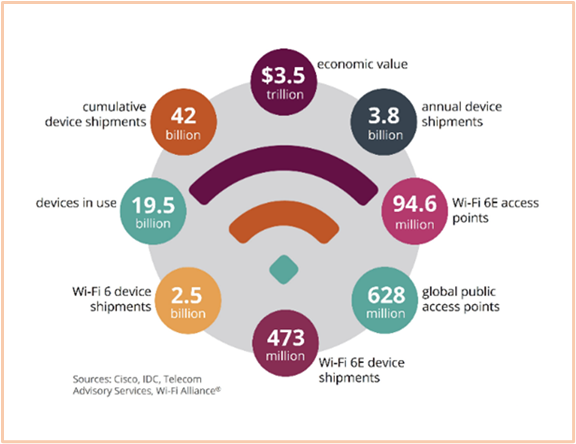
The exponential growth of WiFi usage has inevitably exposed several shortcomings within the technology landscape. These issues arise from a multitude of factors including over-usage, piracy, and interferences, which stem from the challenges of spectrum sharing. Notably, the spectrum utilized by WiFi interfaces with other major technologies, encompassing a wide range of radio frequencies. For instance, while Zigbee operates at 868MHz, WiFi 7 extends up to 6 GHz, exacerbating the potential for spectrum congestion and interference.
Recent wireless announcements (MU-MIMO, WiFi E…) may bring a temporary relief but not a permanent fix. RF spectrum sharing will cause interferences as usage grows, and communications that can be intercepted, can be tempered with.
In addition, RF communication is not compatible with, and in some cases, not permitted in certain environments such as aerospace, healthcare, and critical infrastructure facilities.
A radical innovation is needed for applications and specific areas that require speed, stability, resilience to hacking, and RF insensitivity.
LiFi: a solutionfor Healthcare
LiFi makes use of invisible light, with three immediate advantages.
- 1. Because invisible light operates outside congested RF frequencies, it delivers superior stability, speed, and latency compared to WiFi
- 2. For this same reason, LiFi can provide wireless communications in places where RF is prohibited because of other RF sensitive equipment.
- 3. Finally, light does not cross walls; therefore being a physical barrier to prevent signal interception, intrinsic immunity to crosstalk, and quasi-non-existent opportunities to hack or to jam.
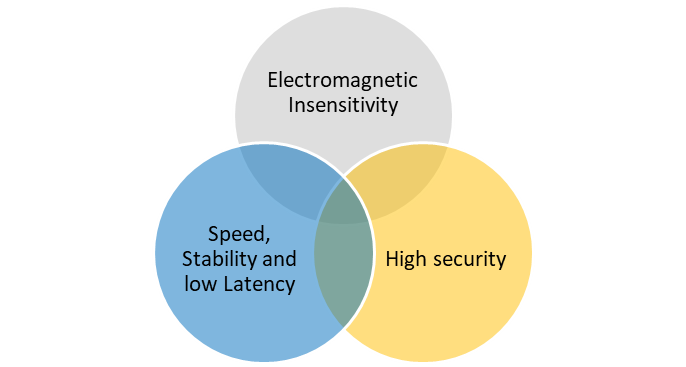
While WiFi remains optimal for applications not reliant on privacy, performance, speed, or RF insensitivity, LiFi emerges as the preferred choice for various other scenarios. Healthcare, in particular, presents a myriad of opportunities for LiFi implementation.
Robotic Surgery
Robotic surgery is based on robots that can perform surgical procedures in a minimally invasive manner. These robots can be operated remotely by human surgeons (which is the most common method used today) or completely automated with the help of more advanced versions of AI. The robot must be able to perform the surgical procedure with, well... surgical precision.
To be able to do so, it is critical for the system to possess a low-latency control mechanism that can quickly transmit control signals to the robotic actuators either from the operating surgeon or the controlling AI in response to the changes in the patient’s condition (as displayed by the imaging system or coming from the system monitoring the patient’s vital parameters).
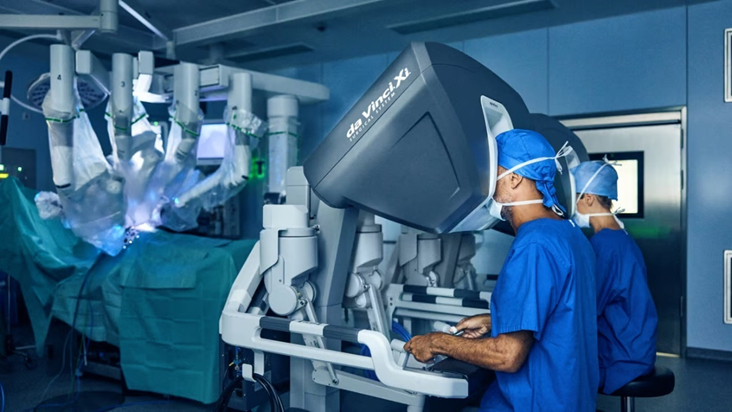
A robotic surgery equipment
WiFi cannot be used to transmit such control signals to the robotic equipment, neither to give back the imagery information displayed in real time to the surgeon, or to the AI that could be soon controlling the operation. Any interference could indeed perturbate the signal quality, and latency of WiFi has been proven as too unstable to allow reliable real-time transmission.
LiFi, thanks to its RF unsensitivity, brings the solution for robotic wireless connectivity. While bringing stability, low latency and high speed; it also allows for the fast reconfiguration of the surgery room, exchanging robots depending on the surgical operation while preventing cable clutters around the surgery bed. This also leads to less equipment cables to sanitize.
Use in RF sensitive environments
One of the most illustrative cases is the use of MRI equipment. MRI provides surgeons with the most detailed visual information on internal soft-tissue structure. It requires the use of a very strong electromagnetic field that can interfere with the functioning of any electronic devices, and especially RF wireless network equipment. Therefore, to ensure the safety and integrity of MRI procedures, RF-emitting devices like WiFi are generally prohibited in MRI rooms and their immediate vicinity.
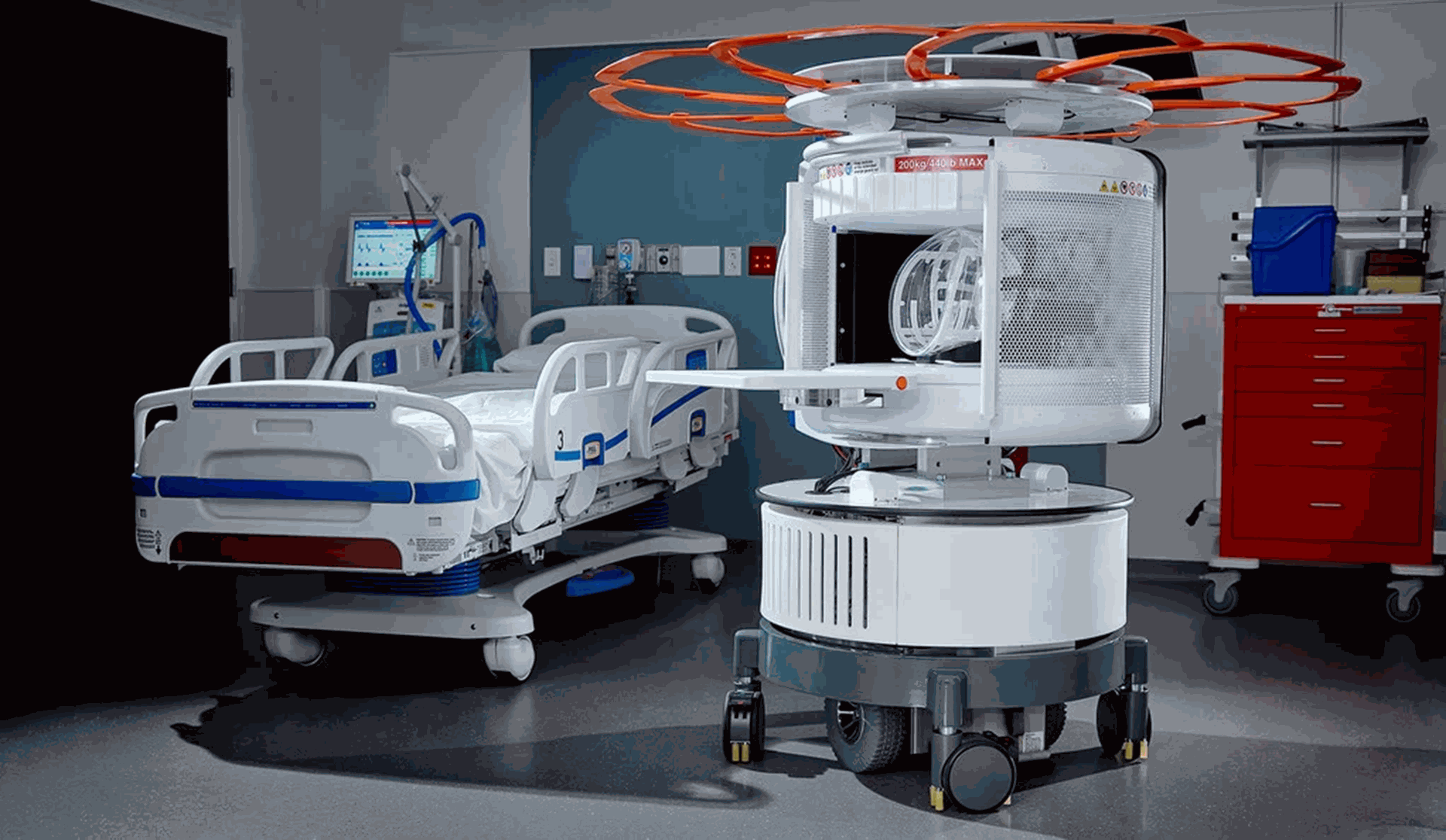
Mobile MRI equipment
In addition to offering low latency communication capabilities, LiFi has a unique property: it does not interfere with strong electromagnetic fields, such as those produced by an MRI machine. A LiFi-based control system can thus ensure wireless connectivity in such an environment, keeping its entire set of low latency and speed qualities.
LiFi can thus be used for driving robots as mentioned above, but also for wireless real-time image transmission for guided or remote surgery. While the speed commercially achieved today by LiFi (215 Mbps PHY level) does not meet the need for uncompressed 4k video signal (between 15 to 20 Gbps depending on pixel depth and frame rate), it is by far enough for transmission of encoded video, for which 50 Mbps is sufficient. Today, high-end video encoding requires about 16 ms for encoding: together with 0.5 to 3 ms LiFi latency, it allows for transmission time far below 80 ms, which is commonly the limit discussed for real-time surgery.
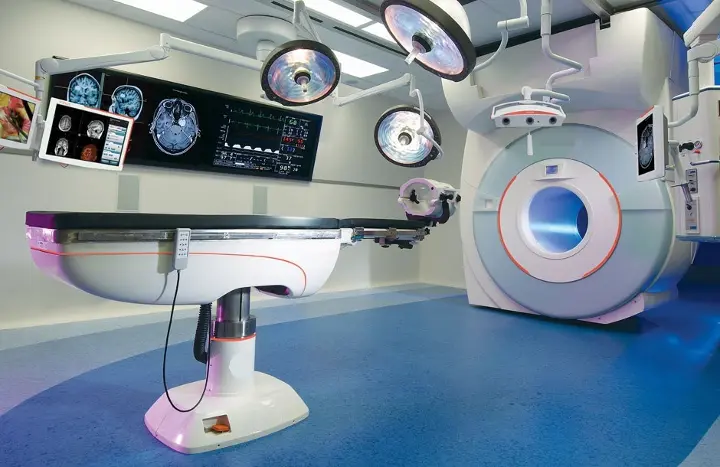
An intraoperative MRI surgery room
Enhanced Security and Privacy
Privacy and data security are paramount in healthcare, where sensitive patient information is exchanged and stored. LiFi technology provides an added layer of security compared to traditional WiFi networks. Unlike RF used in WiFi, LiFi uses invisible light signals that are confined to specific areas and cannot penetrate walls.
This characteristic ensures that sensitive medical data remains within secure environments, reducing the risk of unauthorized access or interception. By implementing LiFi in healthcare facilities, organizations can strengthen data security measures, protect patient privacy, and comply with stringent healthcare regulations.
Experiments have been conducted in several hospitals, where each patient room is LiFi equipped. The doctor and their medical staff go from room to room with the need to have secure, instant access to the patient medical files.
To do so, the staff uses a LiFi-connected trolley carrying a laptop: in each room, this laptop is connected to the rooms LiFi antenna, allowing the doctor to have secure, fast, and reliable wireless access to the patient’s medical information. Such a set-up provides absolute privacy to the patient data, accessible in the room only, while preventing any RF interference with potentially sensitive medical equipment used for the patient treatment, or others in the vicinity.
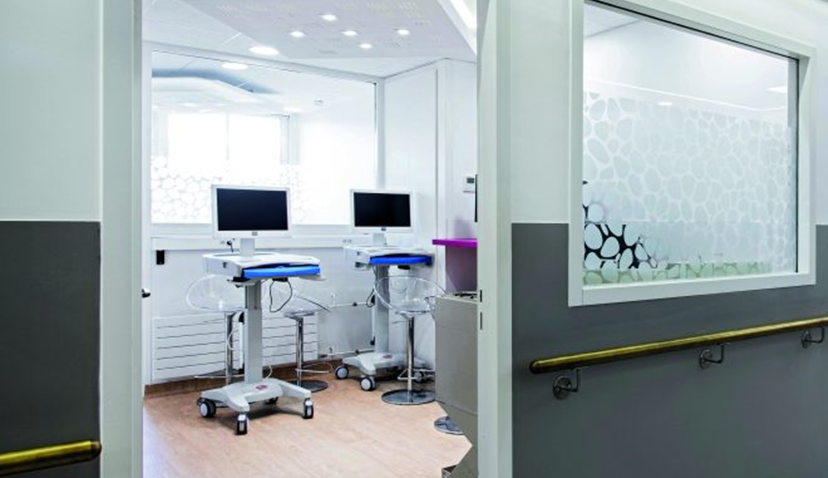
LiFi trolleys in use in the Perpignan French hospital
The experiment has been successfully conducted at the Perpignan hospital in France.
Besides the privacy aspect, the hospital staff made measurements of the electromagnetic field intensity. While no scientific proof has been made about the health impact of RF, the medical staff pays attention to that specific point. WiFi installation in this hospital shows EM fields measured at 3 volts per meter, compared with levels of 0.3 volt per meter measured with LiFi installation, which is below the 0.6 volt per meter recommended by the World Health Organization.
Conclusion
Thanks to its use of light instead of RF transmission, LiFi brings the following unique and extremely important properties for wireless transmission in a hospital environment:
- - An absolute unsensitivity to RF, allowing its use close to RF sensitive or magnetic field emitting equipment such as MRI.
- - A physical security layer for data transmission, preventing the theft of medical and personal data that is possible when using normal RF (WiFi) transmission.
- - The lowest possible latency, which is required for guided surgery and image transmission.
First experiments are already in place in several
institutions that have demonstrated all of these aspects. PhotonFi experts
remain available to explore further experiments and possible deployments in the
healthcare domain.